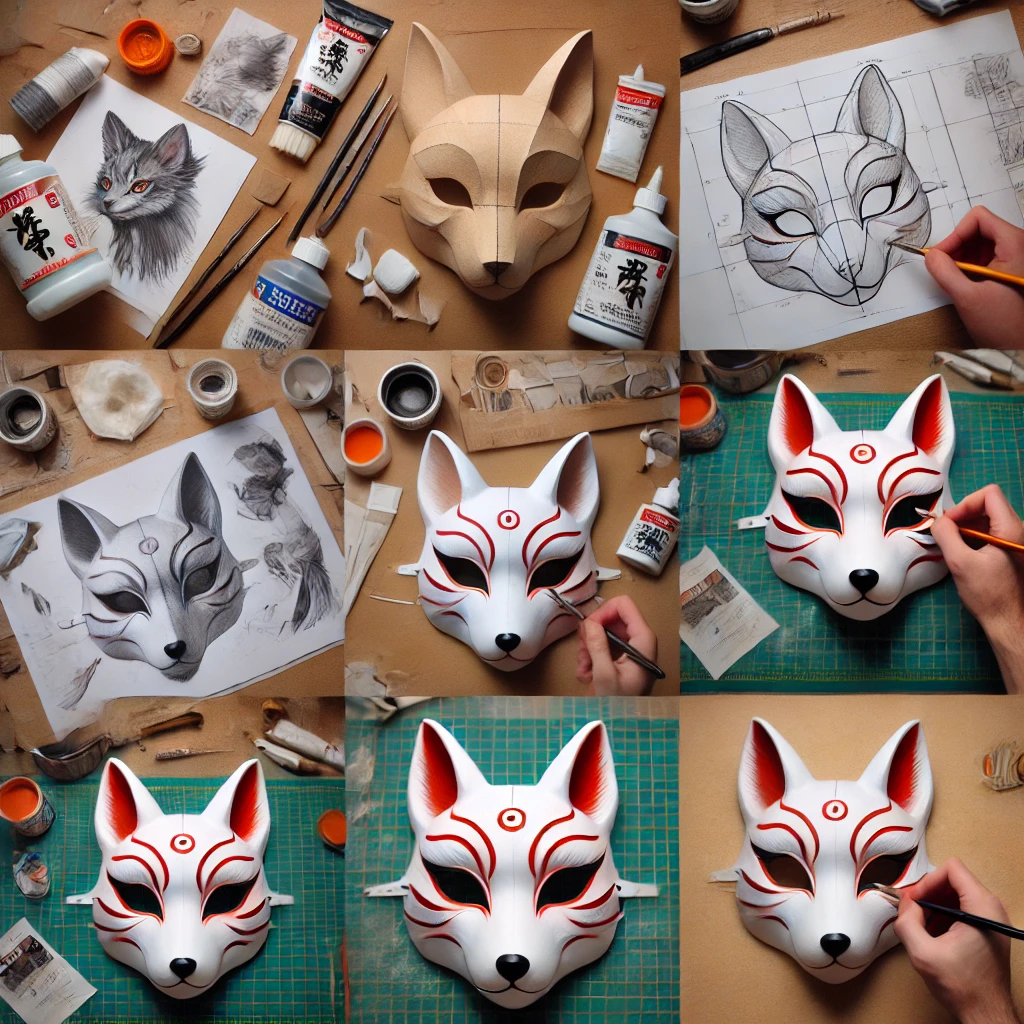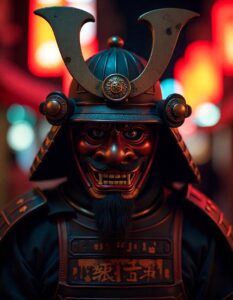Kitsune masks are iconic symbols in Japanese culture, often worn during festivals, performances, and traditional ceremonies. These fox-like masks hold deep cultural significance, embodying the mysterious and mystical nature of the Kitsune, a creature believed to possess spiritual powers.
In this blog post, we’ll explore everything you need to know about creating your own Kitsune mask, from selecting the right materials to expert painting techniques. This guide is designed to provide a comprehensive, trustworthy, and engaging experience for both beginners and enthusiasts.
What Are Kitsune Masks Made Of?
Kitsune masks, while steeped in tradition, can be made using materials that are easily accessible, making them a popular DIY project for those interested in Japanese culture.

Let’s explore the different materials you can use to craft your own Kitsune mask.
1. Base Materials
Traditional Kitsune masks are often crafted from materials like wood, plastic, or clay. In Japan, lightweight woods such as Japanese Cypress are commonly used due to their durability and ease of carving.
However, for those making a Kitsune mask at home, cardboard or papier-mâché are excellent alternatives, especially for beginners.
2. Paper
Paper plays a crucial role in the creation process, particularly in sketching out the design and adding details. You’ll need different types of paper, depending on the complexity of your design. Thin tracing paper can be used for transferring patterns, while thicker paper can be used to reinforce certain areas of the mask.
When I first started making Kitsune masks, I found that using recycled paper for initial sketches allowed me to experiment without worrying about mistakes. Once I was satisfied with the design, I transferred it onto higher-quality paper.
3. Paint
The paint you choose will define the overall look of your Kitsune mask. Traditional masks are often painted with white as the base color, symbolizing purity, while accents of red or orange are used for facial features like the eyes and cheeks.
Use acrylic paint for its fast-drying properties and vibrant colors. Ensure each layer is completely dry before adding the next to prevent smudging and achieve a smooth, professional finish.
4. Metal Accents
For those looking to add a touch of elegance, metal accents such as whiskers or decorative elements around the eyes and mouth can elevate the design. These embellishments are typically found on more ornate masks, often worn during special ceremonies.
If you’re new to mask-making, start with simpler designs and gradually incorporate metal accents as you gain confidence. Metal leaf or metallic paints can also mimic the look of real metal.
Steps to Prepare Your Kitsune Mask
Creating a Kitsune mask is a rewarding process that allows you to express your creativity while honoring a significant cultural tradition.
Here’s a step-by-step guide to help you craft your own Kitsune mask.
1. Prepare the Kitsune Mask Base
Begin by selecting your base material, such as clean cardboard, papier-mâché, or wood. If you’re using cardboard or papier-mâché, ensure the surface is smooth and free of debris. For a white Kitsune mask, it’s crucial to start with a clean base to prevent any discoloration.
Common Mistake to Avoid: Rushing through the preparation phase can result in an uneven surface, making it difficult to achieve a smooth paint finish. Take your time to properly prepare the base.
2. Design the Kitsune Mask Face
Sketch the outline of your Kitsune mask on the base material. Start with the fox-like shape, then carefully draw the eyes, nose, and mouth. Use a pencil to create a guide, allowing you to adjust as needed.
When designing my first Kitsune mask, I found it helpful to look at reference images of traditional masks. This allowed me to capture the authentic look while adding my unique twist.
3. Paint the Kitsune Mask
Start by applying the base colors. A traditional Kitsune mask typically has a white base, symbolizing purity. Once the base is dry, add the red or orange accents to the eyes, cheeks, and other facial features.
To achieve a rich, vibrant color, apply multiple thin layers of paint rather than one thick layer. This prevents cracking and ensures a smooth finish.
4. Add Kitsune Mask Detailing
Once the base paint is dry, it’s time to add details. Use red paint for the eyes and black for the nose. You can add depth to the design by shading around the eyes with brown or yellow tones. This step brings the mask to life, adding personality and character.
If you’re aiming for a more dramatic look, experiment with metallic paints for the detailing. This can add a unique flair to your mask, making it stand out.
5. Allow to Dry and Seal the Mask
After completing the painting and detailing, allow the mask to dry thoroughly according to the manufacturer’s instructions for your materials. Once dry, apply a sealant to protect the paint and give the mask a polished finish.
A clear acrylic sealant works well for most materials. It adds durability and a slight sheen that enhances the overall appearance of the mask.
Conclusion
Creating a Kitsune mask is more than just a craft project; it’s a journey into the rich cultural heritage of Japan. Whether you’re making it for a festival, a performance, or as a decorative piece, the process is deeply rewarding and allows you to connect with an ancient tradition.
By following this guide, you’ll not only craft a beautiful Kitsune mask but also gain a deeper appreciation for the artistry and symbolism behind it. Remember to take your time, enjoy the process, and most importantly, infuse your creation with your unique style.
FAQs
What materials are Kitsune masks made of?
Kitsune masks are traditionally made from lightweight wood like Japanese Cypress, or papier-mâché. Modern versions may also use materials like plastic or clay.
Are Kitsune masks made of real fox fur?
No, Kitsune masks are not made from real fox fur. They are typically crafted from materials like wood or papier-mâché to resemble a fox’s face, holding cultural significance in Japanese folklore.
How are Kitsune masks painted?
Kitsune masks are painted using traditional techniques, often starting with a white base and adding red, orange, or black accents. Natural pigments or acrylic paints are commonly used.
Are Kitsune masks wearable?
Yes, Kitsune masks are designed to be worn, typically featuring straps or ties to secure them during performances or ceremonies.




